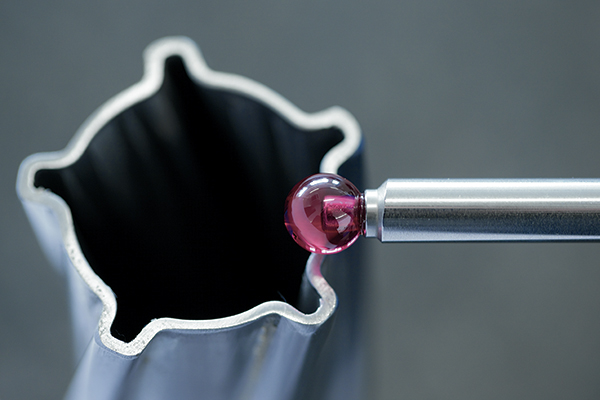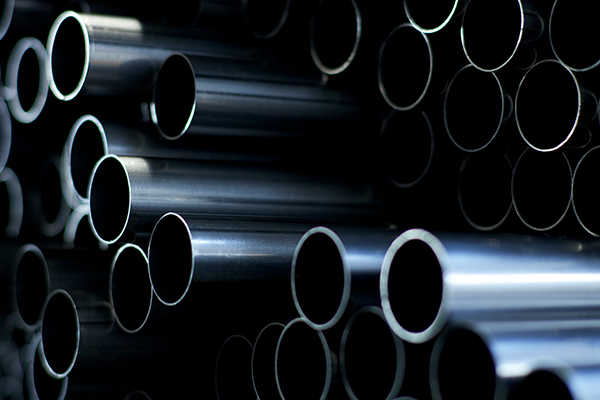
|
Jansen gives PROSTEP top marks for data migrationBy Michael Manderfeld Migration of CAD and PLM data often presents the greatest obstacle when moving to a different system. With the support of PROSTEP, the Swiss company Jansen AG, which manufactures precision steel tubes and steel profile systems as well as plastic tubes for the construction and industrial sectors, has successfully overcome the challenges of data migration when consolidating its heterogeneous CAD/PLM landscape. 
From its inception as a small workshop in Oberriet, Switzerland, in 1923 Jansen AG has evolved into an international high-tech company with considerable materials expertise in the field of steel and plastics processing. The success of this traditional family-run business rests on three pillars: "Building Systems" develops and produces innovative steel profile systems for windows, doors and facades, "Steel Tubes" operates in the field of rolled and drawn precision and formed steel tubes for the automotive and furniture industries, and "Plastic Solutions" is responsible for plastic and profile systems for drinking water and gas supply, drainage, building services and geothermal systems. Jansen employs around 1000 people across the globe and generated sales of 267 million Swiss francs in 2017. Whether it be steel tubes, steel profiles or plastic products, a lot is developed in-house at Jansen. Up until two years ago, the 30 employees in product development at the Building Systems division designed their products in 2D using AutoCAD, which is gradually being replaced by the 3D Autodesk Inventor system. This will take time, and Jansen will need to persuade their metalworking customers to follow suit. To this end, the company offers its own AutoCAD-based libraries so that metalworking companies can use Jansen profiles to assemble their windows, doors and facades without extensive CAD expertise. The product developers used to store their CAD data in folders on a network drive, which made it more difficult to manage different statuses reliably and occasionally resulted in obsolete versions being passed on to colleagues in the toolmaking or plant engineering department. To improve the traceability of changes and to facilitate collaboration between different departments, Jansen, supported by Siemens PLM partner BCT Technology, introduced Teamcenter, a PLM solution for enterprise-wide product data management. BCT also integrated the 3D Autodesk Inventor system and created an electronic workflow to support the cross-departmental offer process. The need for migration in plant engineering In contrast, the 25 design engineers in plant engineering have been working in 3D for some time, using the direct modeling system Creo Elements/Direct from PTC and the Model Manager for managing CAD data. Their main task is to adapt existing production systems for new products and to constantly modernize them. Stefan Zäch, plant engineer and head of the migration project: "Irrespective of whether we are talking about new or existing production lines, they are adapted to customer-specific conditions, for instance with special handling systems for our profiles and tools." A separate tool shop takes care of the design of the roller sets for forming the metal strips and the tools for plastic extrusion. A few years ago, Jansen took the strategic decision to consolidate the heterogeneous CAD system landscape in order to develop and maintain products, tools and equipment in a uniform environment. "That's why we chose Autodesk Inventor as our shared solution," explains Zäch. The parametric CAD system was chosen primarily because of the requirements of the tool shop, which often has to design hundreds of roller sets, which differ only slightly from existing tools, for a single system. The aim is to be able in future to adapt all tools by simply entering a few parameters. Changing the CAD system meant that users in plant engineering and toolmaking had to convert their 3D models and 2D drawings and migrate them to Teamcenter together with the existing CAD data management data. A radical break with the past was not an option for them. Zäch: "There are tens of thousands of drawings of tools and machines that we constantly use. This applies in particular to the drawings for tools, because new tools are needed again and again for current products." Including the drawings used in catalogs, there can be up to five different drawings for a given product. PROSTEP: an expert partner The migration scenario at Jansen was extremely complex. Not only did the CAD data have to be converted, but the PDM metadata also had to be migrated cleanly in order to allow the two to be linked correctly again in the new environment. In addition, there were a number of older 2D drawings as well as paper drawings that had been scanned and converted to PDF that also had to be transferred to Teamcenter. An additional challenge was to connect the German site in Dingelstädt. Although the colleagues there used original data from Oberriet for designing plant systems and tools, they managed this data completely independently, which made it necessary to clarify which was the current version in the event of duplicate files. On BCT's recommendation, Jansen brought PROSTEP's experts on board for the complex migration project in order to make use of their many years of experience in CAD conversion and PDM system migration. Their system expertise and their proven connectors and test scenarios allowed them to guarantee a high quality of migrated data. Zäch was full of praise: "The team members of PROSTEP were very skilled and managed the project excellently. We are very satisfied with the result, even if the costs for the migration were higher than we had initially thought." The PROSTEP team received top marks when the project was evaluated. PROSTEP's PLM specialists not only took care of project management but also developed a new connector for connecting the Model Manager to the OpenPDM integration platform, which was used to map the structures to Teamcenter. And this is a development that PROSTEP can now make available to other customers. The specialists from the data transfer and conversion service OpenDESC.com took on the conversion of the CAD data and had their work cut out for them when it came to optimally preparing the source data for migration. The project manager at PROSTEP coordinated the individual migration steps and ensured that the project was completed quickly. Consolidation of XML and STEP data Originally, the project team wanted to transfer the structure information from Model Manager to Teamcenter in XML, export the Creo Elements/Direct data in STEP format in parallel, and then convert it to Autodesk Inventor format and finally to re-attach the data to the structure. However, it proved difficult to automate the process because the XML structure and the STEP geometry could not always be correctly assigned to each other. When exporting the STEP data for the assemblies, it turned out that components used in multiple assemblies were not output with the name and ID from Model Manager but with a sequence number and the name that the relevant designer had assigned in Creo Elements/Direct. This would have led to the creation of a large number of duplicates and an unnecessary inflation of the database during conversion. By consolidating the XML and STEP data, it was possible to reconstruct the identity of the parts so that the name in the STEP files could be overwritten with the correct name from the Model Manager database using a macro and the duplicates removed. A further difficulty was the conversion of bought-in assemblies, which were created as individual parts in Model Manager. In a separate process, the OpenDESC.com specialists therefore had to identify all assemblies in the STEP data that had no parent/child relations and remove the structures in order to convert them into multi-body part files in Autodesk Inventor. 
Conversion of the drawings Although major changes are nowadays made in the 3D model, the drawing remains the primary document for manufacturing at Jansen. This is partly due to the fact that the CAD/CAM process chain is only gradually being integrated. Production machines are still in use in the workshop that are set up manually or programmed on the basis of the drawing. And there are many external manufacturing partners that are unable to handle the 3D data on its own. Even if they can process this data, they also need the drawing information in order to be able to manufacture the components to the correct tolerances. "There is still no way to automatically convert a geometry designed to nominal size to mid-tolerance," says Zäch sadly. In addition to the 3D models, PROSTEP therefore had to convert and migrate an enormous quantity of older 2D drawings, some of which had been created with CoCreate's ME10 2D system, into Teamcenter. They could not simply be converted from MI to DWG format because they contained numerous BMP, JPEG or TIFF images that would have been subject to a loss of quality during conversion. The experts at PROSTEP wrote a number of macros to extract the images, name them and move them to a separate folder. Corresponding links allow them to be loaded automatically when the DWG drawing is opened. During the three-month migration process, more than 30,000 3D models with their derived 2D drawings and approximately 100,000 older ME10 drawings were converted and checked into Teamcenter. With the exception of one open issue, the migration has been successfully completed. Zäch: "We have not yet generated any PDF files during the DWG conversion. Because we couldn't create them at the touch of a button from Teamcenter, we had to have them converted subsequently." The PDF files are stored on SharePoint so that users without CAD access can also access the drawings. In a further project, it is planned to introduce a new version of MS Dynamics and to create a connection between the ERP and PLM systems. Zäch: "The goal of our digitalization strategy is to make the process from a customer inquiry to a product on the manufacturing system more consistent." He goes on to explain that bringing together digital data from product development, plant engineering and toolmaking has been an important milestone in this process, which has delivered significant improvements in data quality and process reliability. 
|
|
| © PROSTEP AG | ALL RIGHTS RESERVED | IMPRESSUM | DATENSCHUTZERKLÄRUNG | HIER KÖNNEN SIE DEN NEWSLETTER ABBESTELLEN. |

